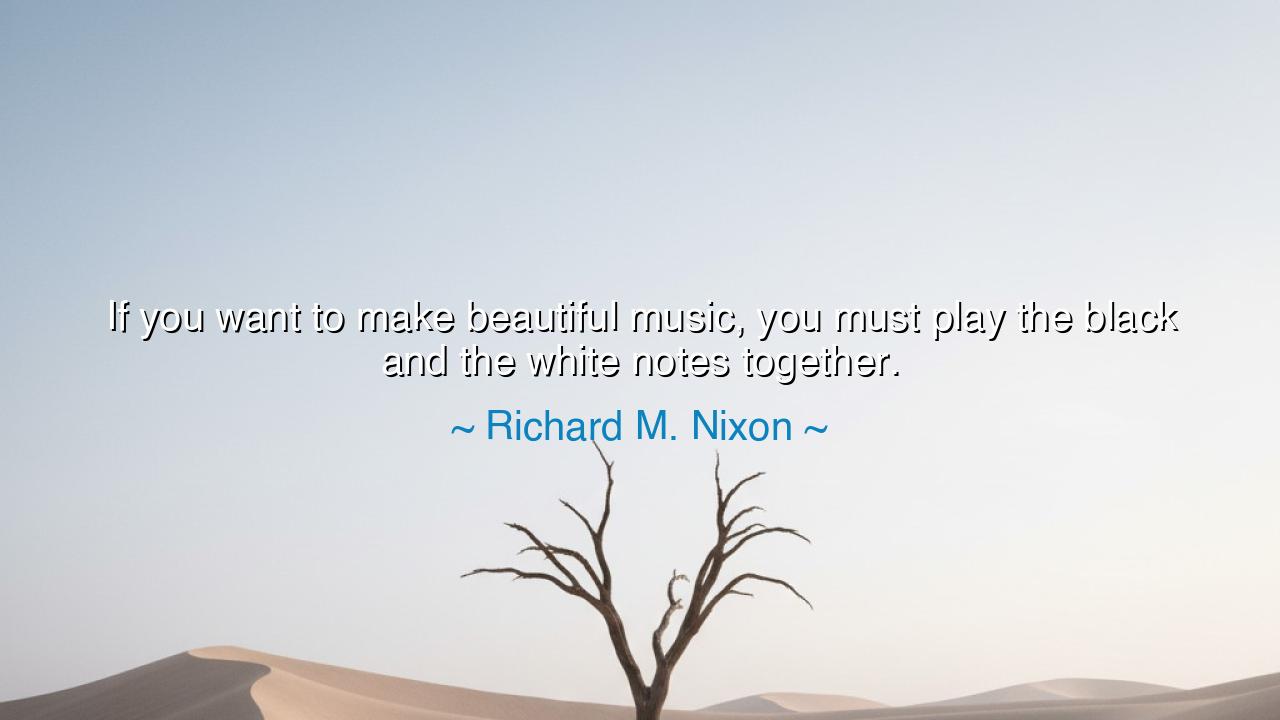
If you want to make beautiful music, you must play the black and
If you want to make beautiful music, you must play the black and the white notes together.






Richard M. Nixon, in a moment of reflection, once declared: “If you want to make beautiful music, you must play the black and the white notes together.” Though spoken by a man of politics rather than of art, these words carry the weight of an ancient truth. They remind us that harmony is not born from uniformity, but from difference joined together in unity. Just as the piano cannot sing with only half its keys, so too can life not flourish when it silences one part of its people, its voices, or its colors.
The meaning of Nixon’s saying rises beyond the mere image of the instrument. The black notes and the white notes are symbols—of race, of diversity, of ideas that stand apart yet belong together. On their own, they are limited, each producing only fragments of melody. But together, when fingers dance across them as one, they give birth to symphony. Herein lies wisdom: true beauty is not found in the dominance of one, nor in the exclusion of the other, but in the blending of both into something greater than themselves.
History itself bears witness to this truth. Consider the birth of jazz in America. It arose not from one people alone but from many—African rhythms woven with European harmonies, sorrow songs fused with classical traditions. From this mingling was born a music that shook the world and carried the spirit of freedom. Had either the black or the white notes been silenced, this gift would never have been born. Thus Nixon’s metaphor points us to the eternal power of unity amid diversity.
Yet this truth is not confined to music. Nations, too, must learn this lesson. A land divided by hatred or prejudice produces only discord. But a land that honors all its voices, black and white, rich and poor, young and old, creates the harmony of strength. The same is true for families, for communities, for every human endeavor. Where people are joined across their differences, the result is not weakness but resilience, not chaos but a higher order of beauty.
The challenge, however, is great. For it is easier to play only the familiar notes, to avoid the dissonance that arises when black and white first meet. Unity requires patience, skill, and the courage to face the tensions of difference. But just as the musician practices until discord becomes harmony, so too must societies and individuals labor until division gives way to fellowship. In this labor lies the noblest work of humankind.
For us, the lesson is clear: seek not the narrow music of exclusion but the fuller symphony of inclusion. In your life, bring together those who differ from you; listen to voices outside your circle; embrace the richness of perspectives that challenge your own. If you are a leader, strive to unite rather than divide. If you are a friend, weave bridges instead of walls. If you are an artist, let your work honor the many colors of humanity. By doing so, you will not only make music—you will make it beautiful.
Practical actions spring from this wisdom: cultivate empathy, practice listening, learn from cultures not your own, and work to heal divisions where you find them. Let your home, your work, and your life be like the piano, where black and white notes are played together, creating harmony greater than either could achieve alone.
Thus, Nixon’s words stand as a parable: “If you want to make beautiful music, you must play the black and the white notes together.” Remember this, and you will know the path not only to music but to peace, not only to beauty but to greatness. For the true measure of a life is not in how loudly one voice plays, but in how many voices it can bring together in song.






AAdministratorAdministrator
Welcome, honored guests. Please leave a comment, we will respond soon